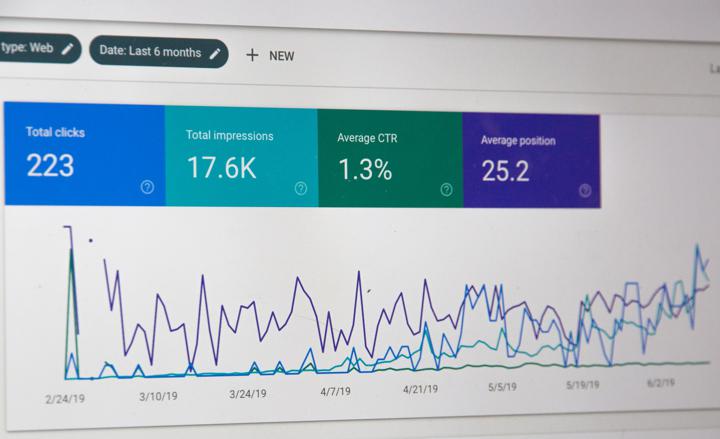
Warships sprayed hot bullets into the village. Children screamed as they watched their parents get torn to shreds by ammunition, before they were—consciously, and without second thought—murdered in the same vein.
It was at this point that Jake had enough. His entire identity, tied to patriotic duty as a veteran, dissipated.
He would join the native tribe that was being massacred right in front of him, and lead them in a revolt against his own people.
This is, of course, the major turning point in the movie Avatar, where Jake—a wheelchair bound ex-marine—falls in love with the Na’avi people, and goes on a redeeming journey to save their precious culture.
James Cameron, who wrote and directed the movie, is one of the masters of cinematic storytelling.
Not only because he’s an expert at conveying emotion through stunning visuals we can’t look away from, but because the characters in his movies have clear emotional throughlines that lead them to their next action.
Because, just like in real life, when something touches our emotions, we are influenced by them to react.
That is why the best way to get people to take action through the use of copywriting, or any other kind of marketing, is by triggering an emotion.
But it has to be done right, or you risk turning off your clients and customers.
What Do You See When You Stand Up Naked In The Morning?
A few years ago, I helped a prominent health and fitness leader with a marketing campaign.
(Now even if this is not your area of business or expertise, this is an important lesson for anyone in any industry, from real estate to dog food.)
She’d nailed all the typical weight loss problems, including one you may have heard (or even felt) before:
People didn’t feel comfortable in their own bodies.
But I dug deeper into the research and discovered something...
Her prospects revealed a compelling emotional story they weren’t telling anybody else while she was on the phone with them.
They actually dreaded the moment in the morning when they had to be alone with their naked bodies before they got dressed.
Much more emotional, right?
Luckily this expert was incredible at what she did, and helped them not only improve their health and confidence—she empowered them to feel better about themselves in those moments.
And we made sure to approach this problem in an empathetic way that showed they weren’t alone in the copywriting process.
But think about the difference between:
“Feel comfortable in your own body again!”
And...
“Never feel the dread that comes from taking off your clothes to shower every single morning ever again.”
And remember, this works for other industries you might not expect.
Think about finance, and going from:
“Feel confident you’ve made the right decision in your retirement.”
And...
“Go home, call your grandkids, and smile as you hear their bright young voices through the phone, knowing you’ve made the right choice for their future.”
That emotional connection is what will make the difference between a piece of copy that converts, and one that does not.
Here’s exactly how to create that bond, so you can sell more of your products and services.
5-Step Process For Moving People To Action Through Emotion
1) Define A Tangible And Vivid Problem To Solve
Before you dig into the emotions of the people you want to help, define the exact problem you want to touch on in your copy.
And get specific.
If you provide plastic surgeons with technology that helps their patients heal faster, but also costs more, the surgeons have to justify that cost.
You can help solve their problem by sharing how they can educate their patients about post-surgery care, and why the technology will benefit them.
2) Decide What Emotion You Want People To Feel
What emotion do the people reading your copy need to feel in order to take action on solving their problem? Is it anger? Is it confidence? Is it loneliness?
For example, our health expert wanted to give her prospects hope and inspiration; a business consultant wants the person she’s speaking to on her Zoom call to feel excited about scaling their business with her method; the medical device supplier knows that his proud intellectual surgeon wants to feel important and educated.
Figure out what the most compelling emotional driver is, and use that as a baseline before you write.
3) Work Backwards From That Emotion
Now, decide what steps you’ll need to take your reader through to get them to that emotional outcome by working backwards from it.
What is the “a-ha moment” that will push them over the finish line?
What do they need to know/feel to get them to that a-ha moment?
And on and on.
For example, the plastic surgeon needs to feel proud to give his patients the best care with the newest technology, so he has to see that doing so positions him as “elite.”
To get there, he has to feel like the product is exclusive and will give him the advantage.
And before that, he has to feel as if he’s missing out on something so he’ll pay attention to education that showcases the exclusivity of the product.
4) Always Anchor Back Into Positivity
Emotions are complex, and they aren’t always easy to understand.
Negative emotions are what rule our worlds and incite change within us most of the time.
Remember, on the other end of your copy is a human being, with feelings just like you.
If you touch on fragile negative emotions (and you will when you dig into the pain the problem is causing), always bring the conversation back to the positive benefit and outcome for your prospects.
For example, our health expert touched on the dreaded morning dress routine, but immediately anchored her prospects back into a positive feeling they remembered by saying:
“I know how hard that can be, but remember that jolt of electric excitement you felt when you sat behind the wheel of the first car you bought yourself, or touched the pen to the check that would buy your first home? That’s how you’re going to feel when you see your brand new body...”
5) Be Cautious
Sometimes people just want a great deal or to learn something new.
In that case, the emotion you want to trigger is excitement, but that’s easily achieved by simply letting them know about what you have.
The best marketers understand that the quickest way to a sale is selling something to people who are eagerly awaiting it.
Like the late Gary Halbert said: The best place to put a hamburger stand is in front of a starving crowd.
But you still have to work backwards from that excitement—how will you get your crowd so hungry for what you have to offer them that they buy immediately?
Simple.
Follow the steps outlined above, and let emotion turn to action until you have succeeded in getting the result you want.
